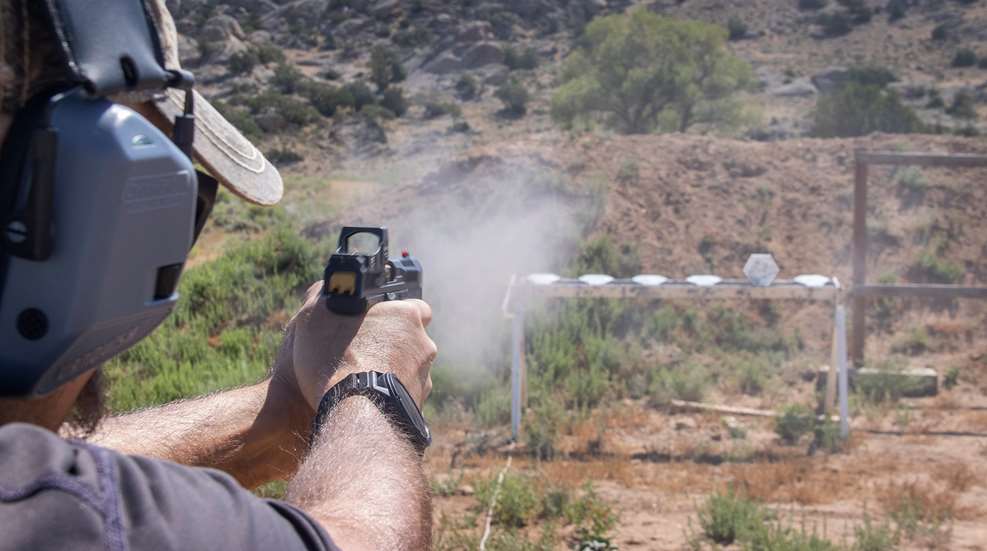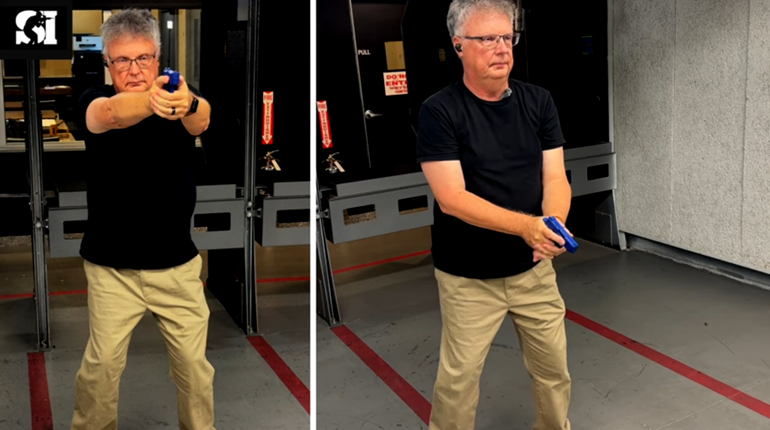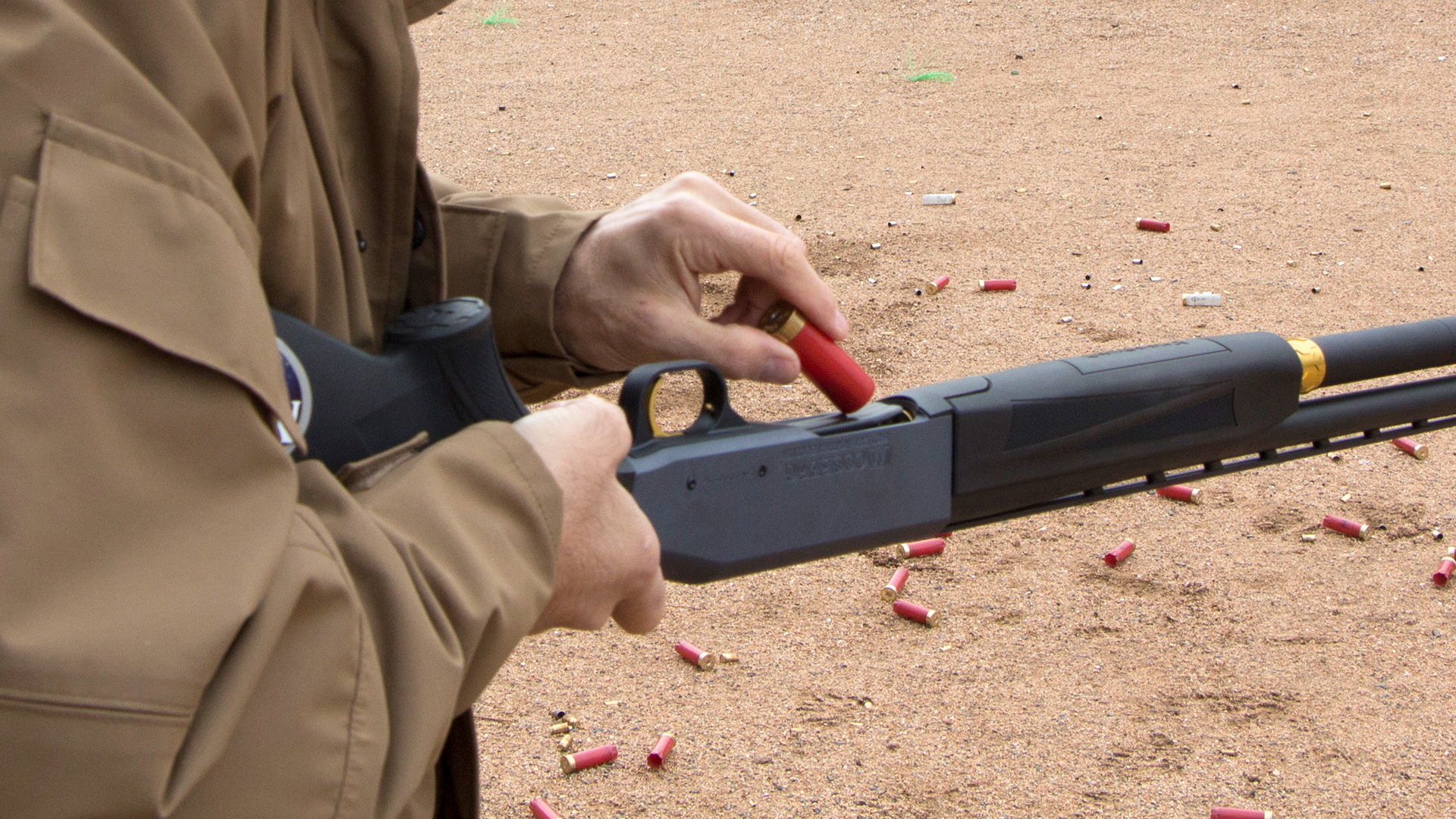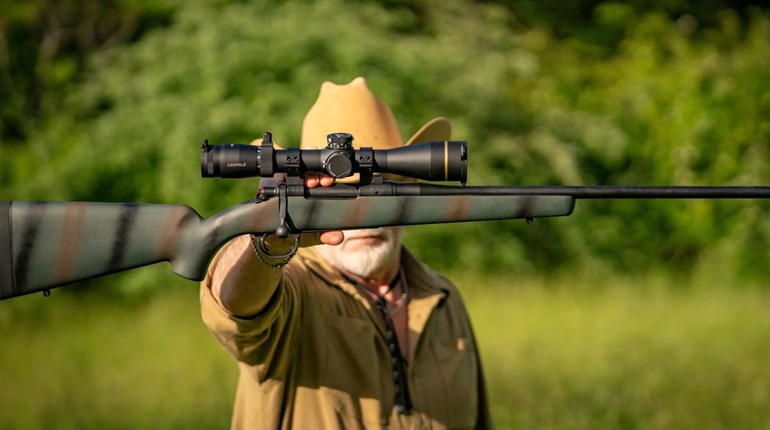
Developing lightning-fast reflexes in the martial arts, defensive tactics (DT) and pistol craft is an art and science. In the blink of an eye, the difference between success and failure, victory and defeat or even life and death can hinge on one critical element: hand speed.
Whether it’s a fighter in the ring unleashing a blinding jab or a marksman rapidly drawing a pistol with surgical precision, hand speed is an undeniable cornerstone of mastery. But, what makes hand speed such an essential attribute, snd how can we harness it effectively?
Hand speed is more than just the raw ability to move quickly. It’s a harmonious blend of reaction time, eyes-hand coordination and technical efficiency. In martial arts, these manifest as explosive strikes that are precise, effective and unpredictable. For pistoleers, it translates to swift draw-align-and-fire actions where milliseconds can determine outcomes.
Cross Culture
Across disciplines, hand speed bridges the gap between the mind’s intent and the body’s execution. It’s a trait admired by practitioners of traditional Western boxing, Muay Thai, Karate and Kung fu just as it’s revered among competitive shooters and law enforcement professionals. The ultimate goal? To become faster, more precise and readily adaptable to rapidly changing environments—qualities that epitomize excellence.
In martial arts, hand speed isn’t simply about strike delivery at breakneck speed; it’s about timing, precision and deception. Celebrity fighters like Bruce Lee and Muhammad Ali showcased this mastery, using rapid-fire movements to overwhelm opponents. Ali’s iconic mantra, “Float like a butterfly, sting like a bee,” captures the essence of combining speed with grace.
Scientific studies reveal that such elite fighters rely on fast-twitch muscle/Type II fibers to generate explosive movements. These fibers, activated through specific training, enable high-speed, high-intensity actions. Beyond biology, hand speed relies heavily on technique. Economy of motion—the ability to minimize wasted movement and energy—ensures that every strike travels the shortest distance between two points with maximum efficiency.
Developing hand speed requires deliberate practice. Shadowboxing with light resistance bands, focus-mitt drills, and speed-bag work are staples for martial artists. Advanced training incorporates reaction-based exercises, such as responding to visual or auditory cues to simulate real-world hand-to-hand combat scenarios. The result? Myelination (creating more robust neural pathways) and sharper reflexes.
For pistol shooters, hand speed is the linchpin of efficient draw-and-fire techniques. Competitive shooters and tactical operators alike strive for a seamless process—from the initial grip in the holster to accurate target engagement.
One of the most revered metrics in the shooting world is the “par time”—the interval between drawing the handgun and delivering a shot on target. Elite competitors achieve sub-one-second draw times successfully applied to impressive target difficulty, a testament to their refined mechanics and reflexes.
The brain and nervous system play a pivotal role in enhancing hand speed for pistol craft. Repetition ingrains movements into the subconscious, reducing cognitive bandwidth and enabling automation under pressure. Dry-fire drills, often paired with shot timers, allow practitioners to hone their draw speed and trigger control without live ammunition.
In high-stakes scenarios, such as law enforcement or self-defense, hand speed isn’t just about drawing quickly—it’s about making decisions under duress. Tactical training emphasizes situational awareness, ensuring that speed is balanced with judgment and accuracy. Simulated scenarios, including force-on-force drills, test an individual’s ability to react swiftly while maintaining control.
The principles of hand speed in martial arts and pistol craft share striking similarities. Both demand recognizing threats and opportunities before initiating action, engaging fast-twitch muscle fibers for rapid execution, ensuring speed doesn’t compromise accuracy and building sub-conscious core capability through repetitive practice.
Interdisciplinary cross-training can yield surprising benefits. Martial artists who practice pistol craft often find their reflexes sharpened, while shooters who incorporate martial arts drills develop heightened coordination and situational awareness.
Take It To The Next Level
Reaching elite levels of hand speed requires pushing past physical and mental limits. Incorporating modern tools, such as high-speed cameras for motion analysis or biofeedback sensors, can help identify inefficiencies and track progress. Additionally, mental training, including visualization techniques, primes the nervous system for rapid responses.
Nutrition and recovery can also play a contributing role. A diet rich in lean proteins and antioxidants supports muscle repair and reduces inflammation, while techniques like cold-water immersion and massage enhance recovery after intense training sessions.
True mastery of hand speed lies in its application. It’s not enough to be fast; one must be fast with purpose. Martial artists must learn to feint, draw out reactions, and strike with intent. Whereas shooters must balance speed—the byproduct of efficiency, with accuracy—the byproduct of control.
Ultimately, hand speed is a journey of continual refinement. It’s the pursuit of excellence through discipline, innovation, and dedicated practice. Whether you’re stepping into the ring or holstering a weapon, the principles remain universal: staying physically tuned, mentally focused, and trained up for controlled precision in motion.
Hand speed is more than a physical attribute; it’s a manifestation of mastery over mind and body. From the dojo to the shooting range, it symbolizes the ongoing pursuit of elite repeatable performance.




































